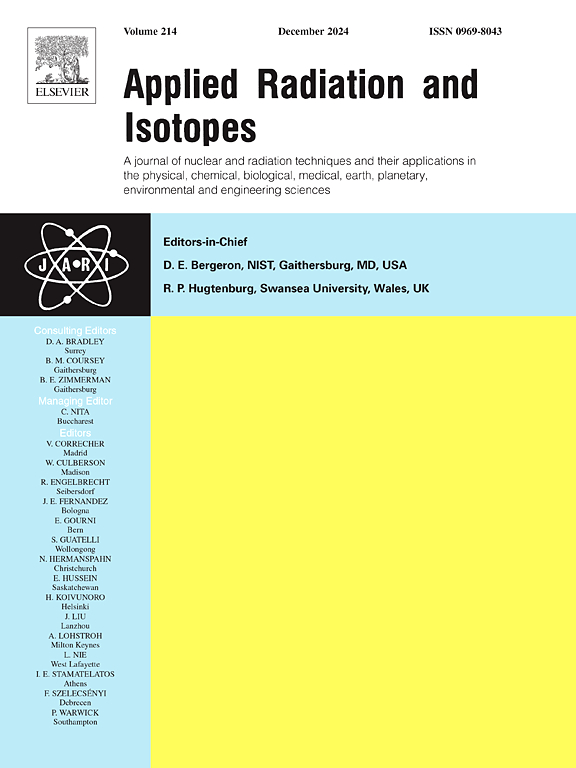Calculation of response parameters for a neutron long counter instrument
IF 1.6
3区 工程技术
Q3 CHEMISTRY, INORGANIC & NUCLEAR
引用次数: 0
Abstract
The primary goal of this study was to develop a simulation model of a long counter available at Canadian Nuclear Laboratories (CNL). Using the Monte Carlo N-Particle version 6 (MCNP6) code, the model was used to calculate, as a function of incident energy, the number of counts recorded per source neutron, effective centre, and sensitivity. This study also carried out measurements of the neutron emission rate of and direct neutron flux at 2 m from an in-house 252Cf neutron source.
计算中子长计数器的响应参数
这项研究的主要目标是开发加拿大核实验室(CNL)现有长计数器的模拟模型。该模型使用蒙特卡洛 N 粒子第 6 版(MCNP6)代码,作为入射能量的函数,计算每个源中子记录的计数数、有效中心和灵敏度。这项研究还对内部 252Cf 中子源的中子发射率和 2 米处的直接中子通量进行了测量。
本文章由计算机程序翻译,如有差异,请以英文原文为准。
求助全文
约1分钟内获得全文
求助全文
来源期刊

Applied Radiation and Isotopes
工程技术-核科学技术
CiteScore
3.00
自引率
12.50%
发文量
406
审稿时长
13.5 months
期刊介绍:
Applied Radiation and Isotopes provides a high quality medium for the publication of substantial, original and scientific and technological papers on the development and peaceful application of nuclear, radiation and radionuclide techniques in chemistry, physics, biochemistry, biology, medicine, security, engineering and in the earth, planetary and environmental sciences, all including dosimetry. Nuclear techniques are defined in the broadest sense and both experimental and theoretical papers are welcome. They include the development and use of α- and β-particles, X-rays and γ-rays, neutrons and other nuclear particles and radiations from all sources, including radionuclides, synchrotron sources, cyclotrons and reactors and from the natural environment.
The journal aims to publish papers with significance to an international audience, containing substantial novelty and scientific impact. The Editors reserve the rights to reject, with or without external review, papers that do not meet these criteria.
Papers dealing with radiation processing, i.e., where radiation is used to bring about a biological, chemical or physical change in a material, should be directed to our sister journal Radiation Physics and Chemistry.
 求助内容:
求助内容: 应助结果提醒方式:
应助结果提醒方式:


